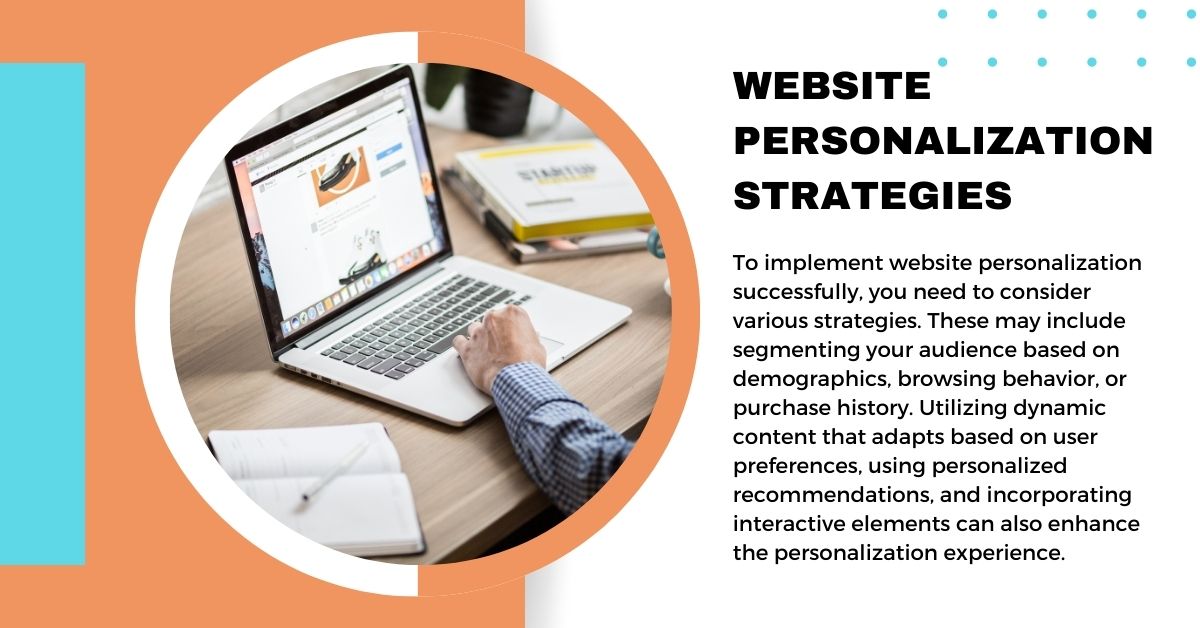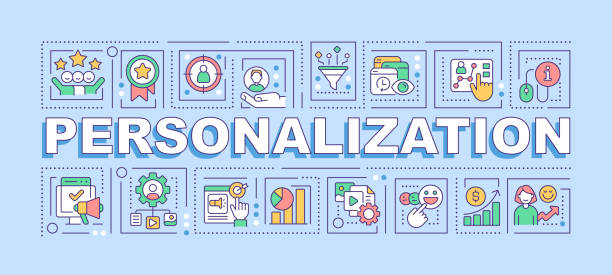In today’s competitive digital landscape, providing a personalized user experience on your website is no longer optional—it’s essential. Website personalization allows you to tailor your content, recommendations, and interactions to individual users, creating a unique and relevant experience. This blog post explores the concept of website personalization and its impact on customer satisfaction. By implementing effective website personalization strategies, you can create memorable experiences, foster deeper connections with your audience, and ultimately drive better customer satisfaction.
Understanding the Power of Website Personalization
Website personalization involves customizing content, offers, and interactions based on user preferences, behavior, and demographics. By leveraging data and insights, you can deliver relevant content, product recommendations, and personalized messaging that resonates with your audience. Website personalization enables you to create a tailored experience that anticipates user needs, enhances engagement, and ultimately leads to greater customer satisfaction.
Key Strategies for Effective Website Personalization
To implement website personalization successfully, you need to consider various strategies. These may include segmenting your audience based on demographics, browsing behavior, or purchase history. Utilizing dynamic content that adapts based on user preferences, using personalized recommendations, and incorporating interactive elements can also enhance the personalization experience. By combining these strategies, you can create a more personalized and satisfying user journey.
Collecting and Analyzing User Data for Personalization
Collecting and analyzing user data is crucial for effective website personalization. Utilize tools such as analytics platforms, customer relationship management (CRM) systems, and user feedback to gather valuable insights. By understanding user behavior, preferences, and needs, you can create personalized experiences that resonate with your audience. It’s essential to ensure compliance with data privacy regulations and to be transparent about how user data is used to build trust and maintain customer satisfaction.
Measuring the Impact of Website Personalization
Measuring the impact of website personalization is vital to assess its effectiveness and make data-driven improvements. Key performance indicators (KPIs) such as conversion rates, time spent on site, bounce rates, and customer satisfaction surveys can provide insights into the success of your personalization efforts. Analyzing these metrics allows you to refine your strategies, identify areas for improvement, and continually enhance the customer experience.
Benefits of Website Personalization
Website personalization offers numerous benefits for both businesses and customers. By providing tailored experiences, businesses can increase customer satisfaction, improve engagement, drive conversions, and foster customer loyalty. Customers, on the other hand, benefit from relevant content, personalized recommendations, streamlined navigation, and a sense of being understood and valued by the brand.
Common Challenges in Implementing Website Personalization
While website personalization offers numerous benefits, it’s important to be aware of common challenges that can arise during implementation. By understanding these challenges, you can proactively address them and ensure a successful personalization strategy.
- Data Collection and Privacy: Collecting and managing user data for personalization purposes requires careful consideration of data privacy regulations. It’s important to obtain proper consent, protect user data, and provide transparent information about how data is used to build trust with your customers.
- Resource Allocation: Implementing website personalization may require additional resources, including technology, personnel, and time. It’s crucial to allocate resources effectively to ensure a smooth implementation and ongoing management of personalized experiences.
- Technical Integration: Depending on the complexity of personalization strategies, technical integration with your website and other systems may be required. This can involve integrating customer data platforms (CDPs), content management systems (CMS), and other tools to collect, analyze, and deliver personalized experiences.
- Testing and Optimization: Implementing website personalization requires continuous testing and optimization to ensure its effectiveness. This includes A/B testing, monitoring user behavior, and making data-driven adjustments to maximize the impact of personalization efforts.
Frequently Asked Questions
Q: What types of data can be used for website personalization?
A: Various types of data can be used for website personalization. These include demographic data (such as age, gender, and location), behavioral data (such as browsing history, click patterns, and purchase history), preferences and interests, user-generated data (such as reviews or ratings), and contextual data (such as device type or referral source). By combining and analyzing these data points, businesses can gain insights into individual user preferences and tailor their website experiences accordingly.
Q: How can website personalization benefit e-commerce businesses?
A: Website personalization can provide significant benefits to e-commerce businesses. By offering personalized product recommendations, targeted offers, and personalized content, businesses can enhance the overall shopping experience. Personalization helps increase engagement, improve conversion rates, and boost customer satisfaction. It can also foster customer loyalty and repeat purchases by creating a more relevant and memorable shopping experience tailored to each individual’s needs and preferences.
Q: Is website personalization only applicable to large enterprises?
A: No, website personalization is not limited to large enterprises. Businesses of all sizes can benefit from website personalization strategies. While large enterprises may have more resources and data at their disposal, smaller businesses can still implement personalization by leveraging available customer data, utilizing affordable personalization tools, and starting with targeted segments or specific aspects of the website. The key is to understand your audience and deliver tailored experiences that align with their preferences and needs, regardless of the business size.
Q: How can I start implementing website personalization on my website?
A: To start implementing website personalization on your website, follow these steps:
- Identify your goals: Determine the specific objectives you want to achieve through personalization, such as improving engagement, increasing conversions, or enhancing customer satisfaction.
- Collect user data: Start gathering relevant user data, including demographic information, browsing behavior, and purchase history. This can be done through analytics tools, user registrations, surveys, or tracking cookies.
- Analyze and segment your audience: Use the collected data to segment your audience based on shared characteristics or behaviors. This allows you to personalize experiences for specific groups.
- Define personalization strategies: Determine how you will tailor the user experience. This can involve customized product recommendations, dynamic content, personalized messaging, or targeted offers.
- Implement personalization tools: Utilize personalization software or plugins to automate the delivery of personalized experiences. These tools can help track user behavior, deliver targeted content, and measure the effectiveness of personalization efforts.
- Test and optimize: Continuously test and analyze the impact of your personalization strategies. A/B testing, user feedback, and data analysis can help refine your approach and improve the effectiveness of your personalization efforts over time.
Read More About User Experience (UX) Testing: Optimizing Websites for Seamless Navigation and Engagement
Conclusion
Website personalization is a powerful tool for enhancing customer satisfaction by delivering tailored experiences that meet individual needs and preferences. By understanding the importance of website personalization, implementing effective strategies, collecting and analyzing user data, and measuring the impact of personalization efforts, you can create a website that leaves a lasting impression on your audience. Embrace website personalization as a key driver of customer satisfaction, and watch as it strengthens your customer relationships and drives business success.



